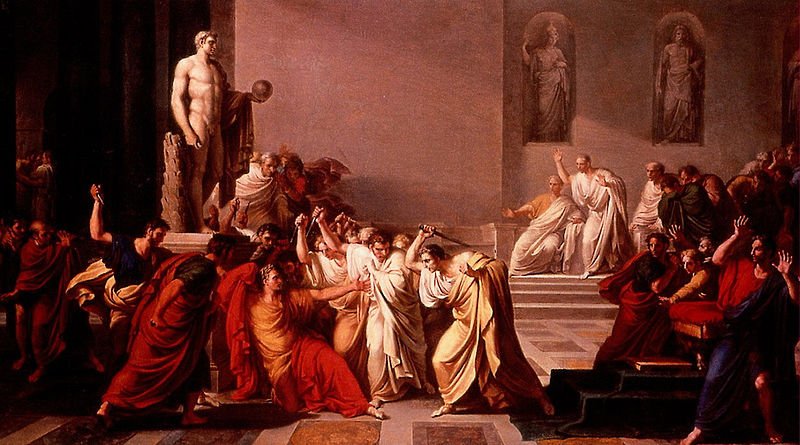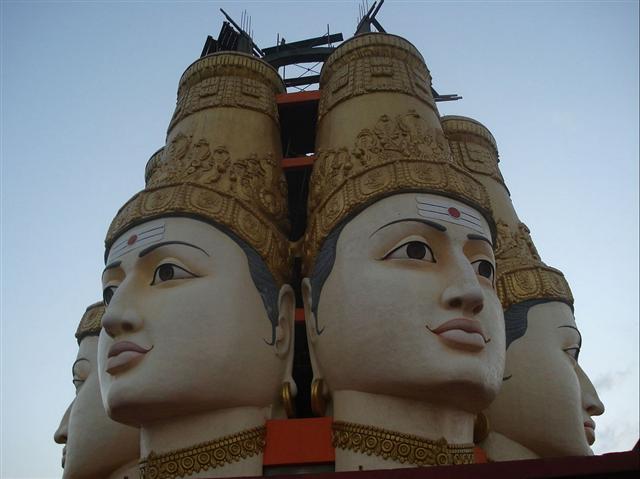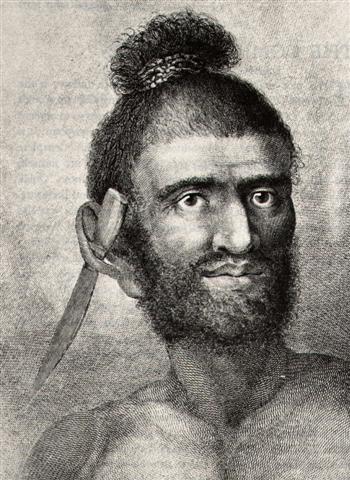60. The Mouth of the Fish - Fomalhaut, 24, α PsA (Piscis Austrinus, Piscis Notius) - is below the path of Mars, this we can see for instance in the map below from how Cartes du Ciel has projected the evening sky for April 14 AD 2024. Mars (the red planet) will here be at Φ Aquarii with Saturn (painted yellow as in the Yellow Emperor) close by at left and with Venus (the Evening star, bluish) apparently on the way to the Sun on the other side. Jupiter is up at right at the border of my picture, although cut off and barely hinted at:
... April 14 is 31 days after 'the π day' 3-14 (Mars 14, 73 = 365 / 5) and 45 (= 360 / 8) days after the Day of All Hearts (2-14, February 14), when Captain Cook was assassinated. ... The Hawaiian woman who was interviewed chuckled because the assassination of Captain Cook coincided with the day we have named All Hearts' Day - when in February 14 (2-14) the war-god Kuu returned to power ... I must here have made a mistake, because April 14 (104) - February 14 (31 + 14) = 59 (→ 2 * 29˝):
... The last relevant position we know of is AD 2023 April 14 (4-14,104, *24, i.e. 20 days after the Julian equinox), when Mars should be due to reach the star at the knee of the outstretched (mebsuta) leg of Castor:
... The distance from April 14 (104) AD 2023 up to and including January 22 (365 + 22 = 387) AD 2024 is 388 - 104 = 284 days which in a way suggests day *284 counted from 0h (March 21, 80) = day 364 = December 30. The 'outstretched' (Mebsuta) leg of Castor (Castor Fiber → Beaver) could evidently have served as a marker:
... Nevertheless, by virtue of a series of spectacular coincidences, Cook made a near-perfect ritual exit on the night of 3 February. The timing itself was nearly perfect, since the Makahiki rituals would end 1 February (±1 day), being the 14th day of the second Hawaiian month [Kau-lua]. This helps explain Mr. King's entry for 2 February in the published Voyage: 'Terreoboo [Kalaniopu'u] and his Chiefs, had, for some days past, been very inquisitive abouth the time of our departure' - to which his private journal adds, '& seem'd well pleas'd that it was soon'. Captain Cook, responding to Hawaiian importunities to leave behind his 'son', Mr. King, had even assured Kalaniopu'u and the high priest that he would come back again the following year. Long after they had killed him, the Hawaiians continued to believe this would happen. With the high priest's permission, the British just before leaving removed the fence and certain images of Hikiau temple for firewood. Debate raged in the nineteenth century about the role of this purported 'sacriledge' in Cook's death, without notice, however, that following Lono's sojourn the temple is normally cleared and rebuilt - indeed, the night the British left one of the temple houses was set on fire. Among the other ritual coincidences, perhaps the most remarkable was the death of poor old Willie Watman, seaman A. B., on the morning of 1 February. Watman was the first person among Cook's people to die at Kealakekua: on the ceremonial day, so far as can be calculated, that the King's living god Kahoali'i would swallow the eye of the first human sacrifice of the New Year. And it was the Hawaiian chief - or by one account, the King himself - who specifically requested that old Watman be buried at Hikiau temple. Messrs. Cook and King read the burial service, thus introducing Christianity to the Sandwich Islands, with the assistance however of the high priest Ka'oo'oo and the Lono 'brethren', who when the English had finished proceeded to make sacrifices and perform ceremonies at the grave for three days and nights. So in the early hours of 4 February, Cook sailed out of Kealakekua Bay, still alive and well. The King, too, had survived Lono's visit and incorporated its tangible benefits, such as iron adzes and daggers. In principle, the King would now make sacrifices to Kuu and reopen the agricultural shrines of Lono. The normal cosmic course would be resumed. Hence the ultimate ritual coincidence, which was meteorological: one of the fertilizing storms of winter, associated with the advent of Lono, wreaked havoc with the foremast of the Resolution, and the British were forced to return to Kealakekua for repairs on 11 February 1779 ... Mr. King remarks that there were not as many hundreds of people at their return to Kealakekua as there had been thousands when they first came in. A tabu was in effect, which was ascribed to the king's absence. By the best evidence, the British had interrupted the annual bonito-fishing rite, the transition from the Makahiki season to normal temple ceremonies. Cook was now hors cadre. And things fell apart. Early on Sunday morning, 14 February 1779, Captain Cook went ashore with a party of marines to take the Hawaiian king, Kalaniopu'u, hostage against the return of the Discovery's cutter, ... Skanda (literally 'the jumping one' or 'the hopping one') is the planet Mars, also called Kartikeya, inasmuch as he was borne by the Krittika, the Pleiades. Mbh. 9.44-46 (Roy trans. vol. 7, pp. 130-43). It should be emphasized, aloud and strongly, that in Babylonian astronomy Mars is the only planetary representative of the Pleiades. See P. F. Gössmann. Planetarium Babylonicum (1950), p. 279: 'In der Planetenvertretung kommt für die Plejaden nur Mars in Frage.' ... The star cluster Krittika ... sometimes known as Kārtikā, corresponds to the open star cluster Pleiades in Indian astronomy and Jyotisa (Hindu astrology). The name literally translates to 'the cutters' ... In Hindu mythology, the god Murugan (Skanda / Subrahmanya / Kartikeya) was raised by the six sisters known as the Krttikā and thus came to be known as Kārtikeya (literally 'Him of the Krttikā'). According to the Mahābhārata, Murugan was born to Agni and Svāhā, after the latter impersonated six of the seven wives of the Saptarsi and made love to him. The Saptarshi, hearing of this incident and doubting their wives' chastity, divorced them. These wives then became the Krttikā ...
... The Mahabharata insists on six as the number of the Pleiades as well as of the mothers of Skanda and gives a very broad and wild description of the birth and the installation of Kartikeya 'by the assembled gods ... as their generalissimo', which is shattering, somehow, driving home how little one understands as yet. The least which can be said, assuredly: Mars was 'installed' during a more or less close conjunction of all planets; in Mbh. 9.45 (p. 133) it is stressed that the powerful gods assembled 'all poured water upon Skanda, even as the gods had poured water on the head of Varuna, the lord of waters, for investing him with dominion'. And this 'investiture' took place at the beginning of the Krita Yuga, the Golden Age ... stolen the night before in a bold maneuver ... All was now ready for departure except that there was no fire in the smithy. The ancestor slipped into the workshop of the great Nummo, who are Heaven's smiths, and stole a piece of the sun in the form of live embers and white-hot iron. He seized it by means of a 'robber's stick' the crook of which ended in a slit, open like a mouth. He dropped some of the embers, came back to pick them up, and fled towards the granary; but his agitation was such that he could no longer find the entrances. He made the round of it several times before he found the steps and climbed onto the flat roof, where he hid the stolen goods in one of the skins of the bellows, exclaiming: 'Gouyo!', which is to say. 'Stolen!'. The word is still part of the language, and means 'granary'. It is a reminder that without the fire of the smithy and the iron of hoes there would be no crops to store ... - of which, however, the amiable old ruler was innocent. At the decisive moment, Cook and Kalaniopu'u, the God and the King, will confront each other as cosmic adversaries. Permit me thus an anthropological reading of the historical texts. For in all the confused Tolstoian narratives of the affray - among which the judicious Beaglehole refuses to choose - the one recurrent certainty is a dramatic structure with the properties of a ritual transformation. During the passage inland to find the king, thence seaward with his royal hostage, Cook is metamorphosed from a being of veneration to an object of hostility. When he came ashore, the common people as usual dispersed before him and prostrated face to earth; but in the end he was himself precipitated face down in the water by a chief's weapon, an iron trade dagger, to be rushed upon by a mob exulting over him, and seeming to add to their own honors by the part they could claim in his death: 'snatching the daggers from each other', reads Mr. Burney's account, 'out of eagerness to have their share in killing him'. In the final ritual inversion, Cook's body would be offered in sacrifice by the Hawaiian King ...
... Cook's first visit, to Kaua'i Island in January 1778, fell within the traditional months of the New Year rite (Makahiki). He returned to the Islands late in the same year, very near the recommencement of the Makahiki ceremonies. Arriving now off northern Maui, Cook proceeded to make a grand circumnavigation of Hawai'i Island in the prescribed clockwise direction of Lono's yearly procession, to land at the temple in Kealakekua Bay where Lono begins and ends his own circuit. The British captain took his leave in early February 1779, almost precisely on the day the Makahiki ceremonies closed. But on his way out to Kahiki, the Resolution sprung a mast, and Cook committed the ritual fault of returning unexpectedly and unintelligibly. The Great Navigator was now hors catégorie, a dangerous condition as Leach and Douglas have taught us, and within a few days he was really dead - though certain priests of Lono did afterward ask when he would come back ...
|
|||||||||||||||||||||||||||||||||||||||||||||||||||||||||||||||||||||||||||||||||||||||















